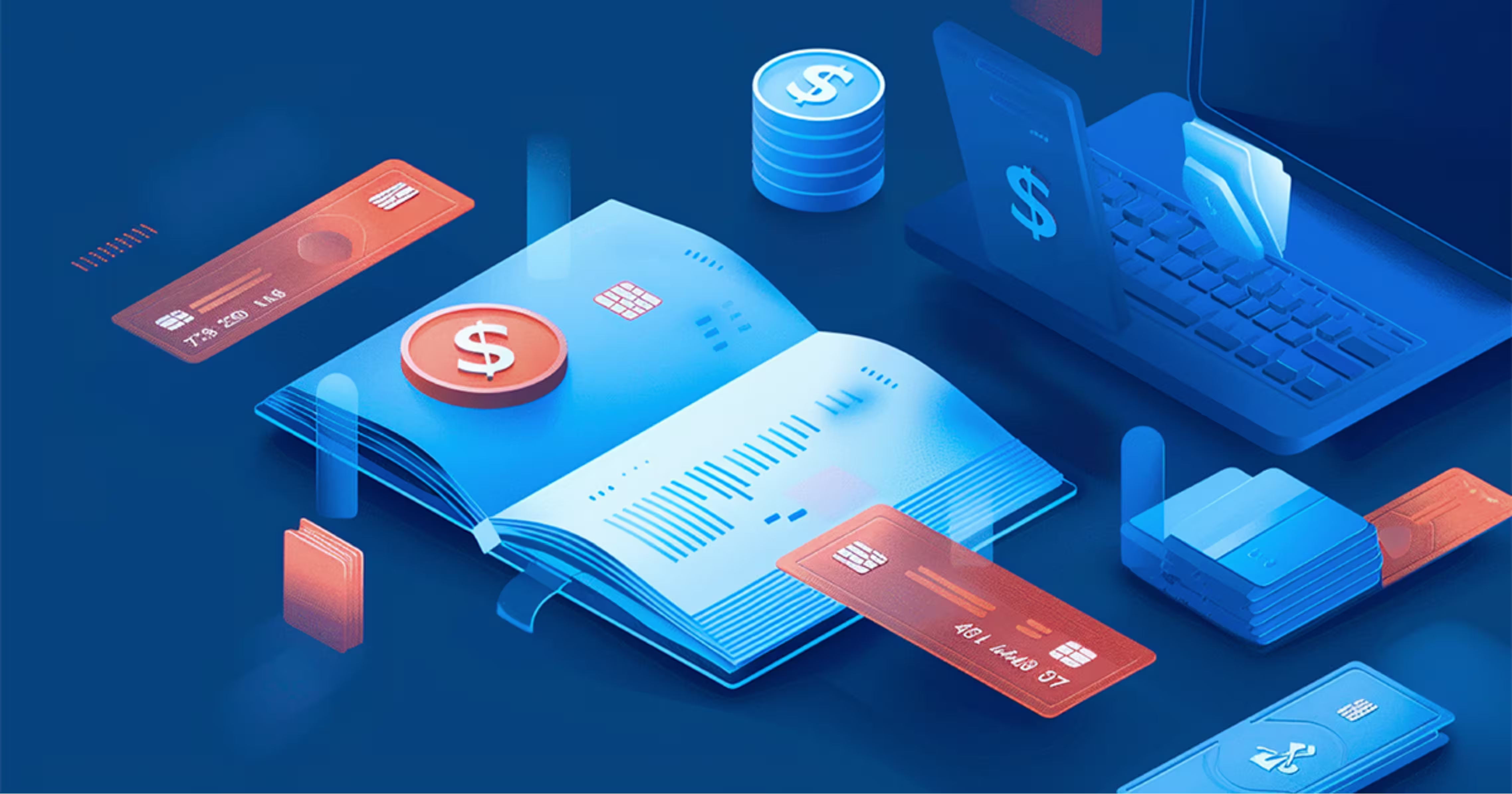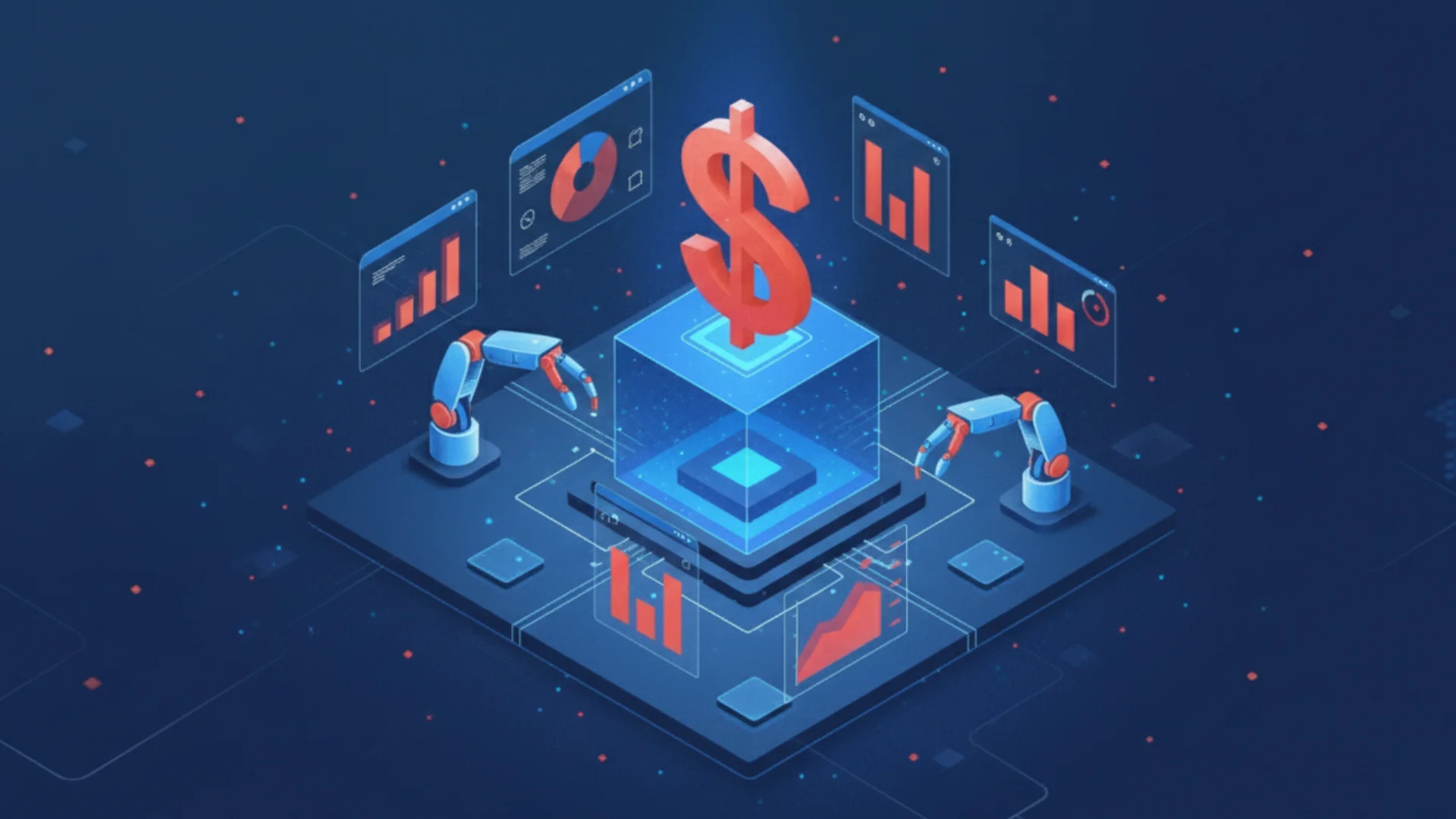Accounting for Cloud Computing Arrangements: ASC 350-40 Guide

Cloud tools are essential to modern SaaS operations, but accounting for them isn't straightforward.
Under ASC 350-40, cloud computing arrangements (CCAs) require careful evaluation. How you treat setup costs, licenses, and implementation expenses impacts your books, investor reporting, and EBITDA.
In this guide, we’ll simplify how accounting for cloud computing arrangements work.
What’s the difference between expensing and capitalizing?
When a cost is expensed, it's recorded immediately in the income statement, reducing net income for that period. In contrast, when a cost is capitalized, it’s added to the balance sheet as an asset and then amortized over time, spreading the impact across multiple periods.
Why it matters:
- Expensing lowers short-term profits but keeps the balance sheet lean.
- Capitalizing boosts current profits (since costs are deferred) but increases total assets.
When should you capitalize vs. expense cloud computing costs?
Capitalizing costs in CCAs
Capitalized costs are typically tied to the implementation phase, configuring, coding, or customizing the system before it’s ready for use.
Key criteria for capitalization:
Capitalize costs if they:
- Occur after planning but before the system is ready
- Directly help get the system running
Examples of capitalizable costs:
- Custom coding and configuration
- System integration
- Essential data migration
- Direct coding, testing, installation
Expensing cloud computing costs
Ongoing costs that support daily operations are usually expensed as incurred.
Examples of expenses:
- Monthly/annual subscription fees
- Staff training
- Data conversion that’s not essential to functionality
- Maintenance and support services
How are cloud computing costs accounted for?
Cloud Computing Agreements (CCA) let companies access IT services like SaaS, IaaS, or PaaS through subscriptions instead of owning software. Like technical SEO services optimize backend website performance, CCAs streamline IT operations with flexibility and scalability.
Why is accounting for CCAs a big deal?
Misclassify them, and you risk misstated financials, unhappy auditors, or even compliance issues.
For SaaS companies, especially those scaling fast, getting accurate revenue recognition affects:
- EBITDA and operating margins
- Cash flow visibility
- Due diligence readiness
- Accurate RevRec and compliance with ASC 606
What are the key accounting standards for cloud computing arrangements?
Three main standards apply to CCAs:
Service contracts vs. software licenses
When dealing with cloud computing arrangements (CCAs), one of the first questions finance teams must answer is: Are we buying a service or a software license? This classification drives how costs are treated under different accounting standards.
What are the types of cloud computing arrangements?
Here's a quick look at 3 types of cloud computing arrangements (CCAs):
SaaS (Software as a Service)
Pay to use remotely hosted software like billing systems or CRMs.
Accounting treatment:
Think of a company that subscribes to a cloud-based CRM tool.
- How it works: You don’t own the software, you just pay a monthly or annual fee to use it online.
- Accounting treatment:
- Since you're not getting a software license, it's treated as a service contract (under ASC 350-40).
- The subscription fees are usually expensed when paid.
- Some setup costs (like configuration or testing) can be capitalized if they meet the rules in ASU 2018-15.
- These capitalized costs are then amortized (spread out) over the length of your contract.
Example:
If your company pays $1,000/month for a CRM and spends $10,000 upfront on implementation:
- The $1,000/month is expensed each month.
- If the $10,000 covers setup work that qualifies, you spread that cost over, say, a 3-year contract, about $278/month as an amortized expense.
SaaS arrangements can involve complex revenue logic, especially with usage-based pricing or bundled services. Zenskar, a revenue recognition software, automates this complexity by parsing contracts, identifying ASC 606-compliant performance obligations, and generating revenue schedules, cutting manual work by up to 75%. For finance teams juggling multiple SaaS vendors, Zenskar ensures consistent, compliant, and audit-ready revenue recognition.
💡Learn how Zenskar helped Yembo save 90% of their finance team's bandwidth, collect 50% of revenue earlier, and eliminate revenue leakage.
IaaS (Infrastructure as a Service)
Rent computing infrastructure without owning hardware.
Accounting treatment:
- Usually treated as service contract
- Subscription fees expensed when incurred
- Implementation costs may be capitalized under ASC 350-40 if relating to internal-use software
PaaS (Platform as a Service)
PaaS provides a ready-to-use environment for developers to build, run, and manage apps without worrying about infrastructure.
Accounting treatment:
- Also considered a service unless it includes a separable software license
- Ongoing platform fees are expensed, while qualifying implementation costs (e.g., app integration, configuration) may be capitalized under ASC 350-40
Hybrid cloud arrangements
These combine a software license (e.g., on-prem ERP) with cloud services (e.g., analytics, storage). You may own part of the software but still rely on the cloud for core functions.
Accounting treatment:
- If the license meets the "right to take possession" criteria, it falls under ASC 985-20 (externally marketed software)
- The cloud portion is treated under ASC 350-40 as a service
- Costs allocated and tracked separately
Hybrid setups often involve multiple components, like license fees, subscription costs, and performance-based billing. Zenskar helps finance teams track, allocate, and recognize revenue across hybrid contracts with built-in logic to handle multi-element arrangements. It also aligns automated billing and accounting workflows, so you don’t have to manually separate license vs. service costs.
When can you capitalize implementation costs in cloud computing arrangements?
Under ASU 2018-15 (now ASC 350-40), certain implementation costs for cloud service contracts can be capitalized based on future economic benefit.
Capitalizing implementation costs
Costs during the application development phase, such as:
- Configuration and customization
- Integration with existing systems
- Licensing tied to setup
- Direct coding, testing, and installation
These are amortized over the contract term (including likely renewals).
Classifying implementation costs
Costs before or after development, like planning, training, or post-launch support, are expensed as incurred.
Capitalization depends on:
- The project phase (only development-stage costs qualify)
- Whether it's a pure service contract or includes a software license
How are capitalized cloud computing costs amortized and measured over time?
Capitalized implementation costs are amortized straight-line over the cloud arrangement term, including reasonably certain renewals. This aligns the expense with the period over which the benefit is realized.
Key factors in determining useful life:
To figure out how long to spread out (amortize) capitalized cloud setup costs, companies usually look at:
- Length of the contract: including likely renewals
- How fast the tech might become outdated
- Whether usage will change over time
If the value of the service drops, maybe due to a strategy shift or new technology, the company needs to check for impairment.
Example:
A company signs a 3-year contract for a cloud-based HR platform and capitalizes $7,500 in implementation costs. But 18 months in, they migrate to a more advanced system. Since the old platform no longer delivers the same value, they reassess the remaining capitalized costs. After evaluation, they estimate the recoverable value is only $1,200. The rest is written off as an impairment loss.
Periodic reassessment of capitalized costs
As services are modified, upgraded, or extended, companies must reassess whether the useful life remains accurate, if any new costs should be capitalized or expensed, and the impact of scope changes on financial statements.
How should you account for subscription fees in cloud computing arrangements?
Most cloud computing arrangements today, especially SaaS, operate on a subscription model. These recurring payments may look simple on paper, but their accounting treatment depends on timing, scope, and contract structure.
Handling subscription fees in CCAs
Under ASC 350-40, subscription fees are typically treated as operating expenses. That’s because these fees are payments for access to software or infrastructure, not for ownership.
- Ongoing subscription fees (monthly, quarterly, annually), expensed as incurred.
- Prepaid or multi-year fees, allocated over the contract period, if paid upfront.
Zenskar makes this easy by automatically recognizing subscription-related expenses based on billing terms and contract duration, no need to manually defer or allocate expenses.
Subscription fee payment terms and their impact
Let’s say a company signs a 3-year SaaS deal and pays $120,000 upfront. Even though the payment is made in year one, the cost should be spread across the three years to reflect service consumption accurately.
What are the disclosure and reporting requirements for cloud computing arrangements?
GAAP/IFRS disclosures for CCAs
Under ASC 350-40 and corresponding IFRS guidance, companies are required to disclose:
- Nature of cloud computing arrangements
- Amount of capitalized implementation costs
- Amortization method and useful life
- Total amortization expense recognized
- Any impairments and reasons
These disclosures help users of financial statements understand the scale, timing, and uncertainty of future benefits related to CCAs.
Common disclosure examples
Some typical line items and notes you may see include:
- "Capitalized implementation costs related to cloud-based software solutions amounted to $X as of year-end."
- "The company recognized $Y in amortization expense related to CCA implementation during the year."
- "An impairment of $Z was recorded due to a reduction in projected use of the cloud platform."
Financial statement impact
Cloud-related accounting impacts all three core financial statements:
Metrics to watch
CCAs can subtly shift financial metrics that investors and CFOs track closely:
- EBITDA: May appear deflated as amortization is non-cash.
- CAPEX/OPEX ratio: Capitalized costs move spend from OpEx to CapEx
- DSO (Days Sales Outstanding): May rise if service components affect billing structures
What real-life accounting challenges do companies face in cloud computing arrangements?
Zenskar makes accounting for cloud computing effortless
Accounting for cloud computing isn’t just a compliance task, it affects how your company tracks spend, reports earnings, and scales systems. ASC 350-40 offers clarity, but applying it correctly can be tricky.
Accounting software like Zenskar are changing the game, making revenue recognition and compliance faster and easier, so your finance team can focus on strategy, not spreadsheets.

Book a free demo to explore how Zenskar can support your cloud accounting needs.
Switch to zero-touch FinOps with Zenskar
Vertice closed books 70% faster with Zenskar
We launched our product 4 months faster by switching to Zenskar instead of building an in-house billing and RevRec system.

Frequently asked questions
Cloud-based solutions apply ASC 606/IFRS 15 guidelines to break down complex contracts into performance obligations. They automate revenue recognition by parsing contracts, identifying service components (licenses, implementation, support), and allocating revenues accurately over time. Using automation platforms like Zenskar, they track multi-element arrangements, subscription fees, usage-based pricing, and adjust revenue schedules dynamically to ensure compliance, reduce manual work, and minimize revenue leakage.
Maxio (formerly Chargify) emphasizes built-in revenue recognition features compliant with ASC 606 and IFRS 15, supporting multi-element contracts and complex billing scenarios with automated revenue schedules. It provides detailed audit trails and compliance-ready financial reporting. Recurly supports revenue recognition but tends to focus more on subscription management and billing automation; compliance capabilities require more manual setup or third-party integrations. Maxio offers a more comprehensive native GAAP/IFRS compliance suite, while Recurly may require augmentations for full compliance in complex enterprises.


















%20be%20truly%20invisible_.webp)



